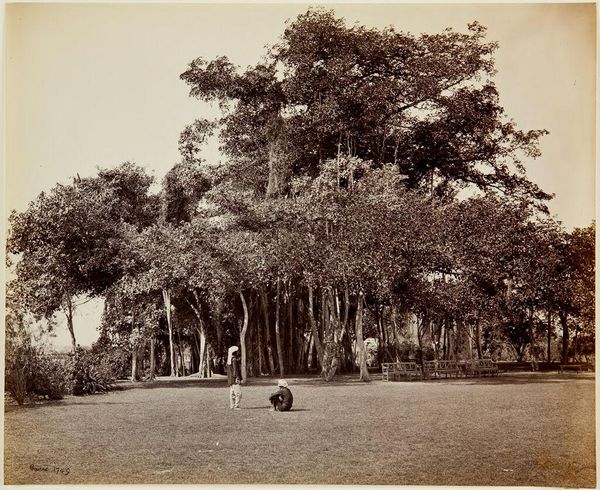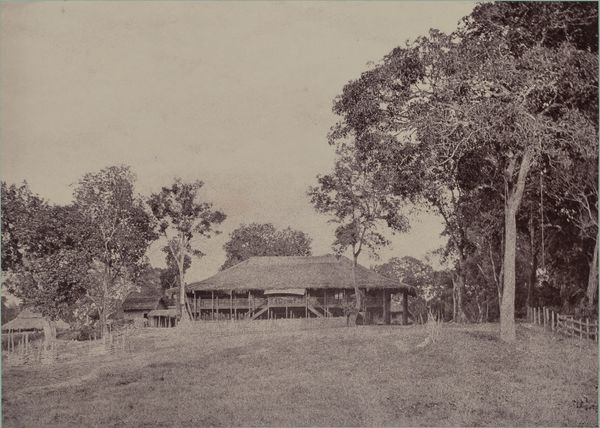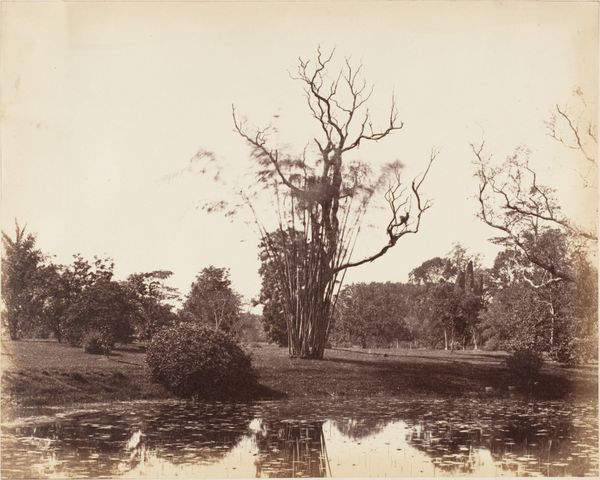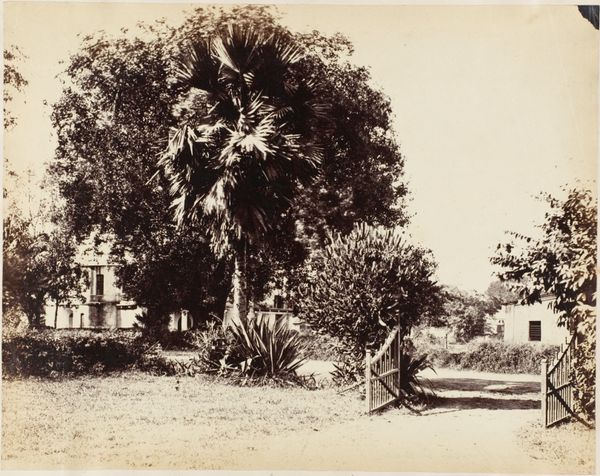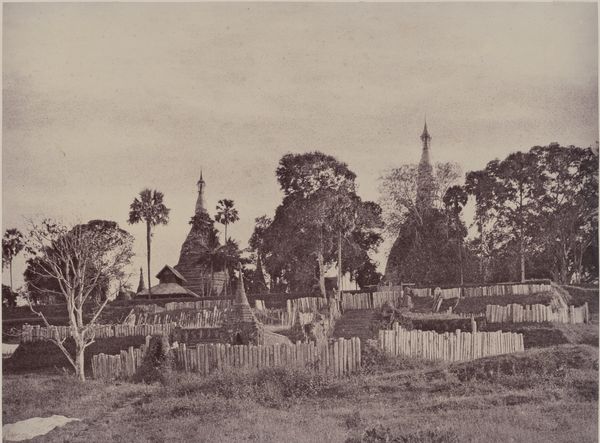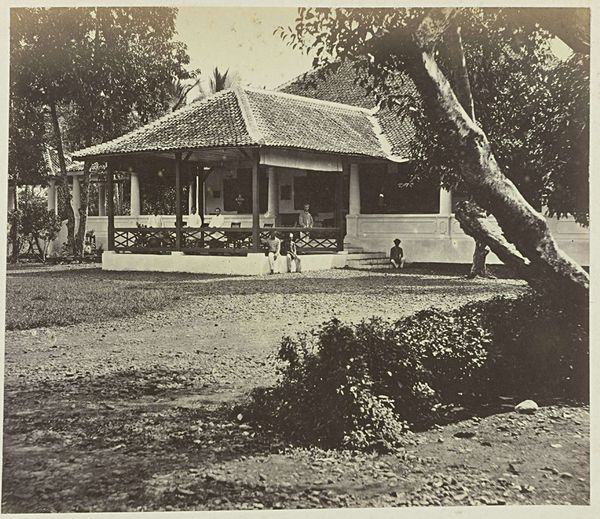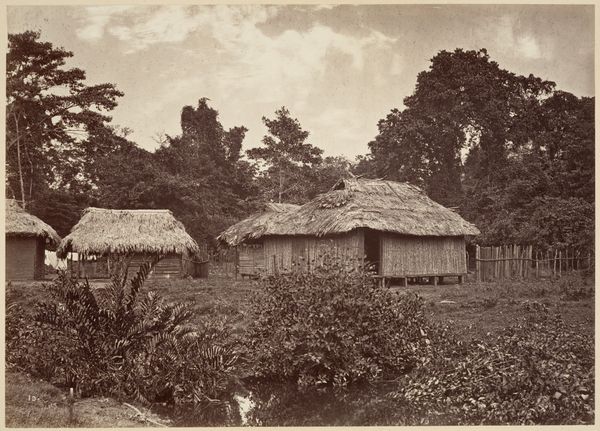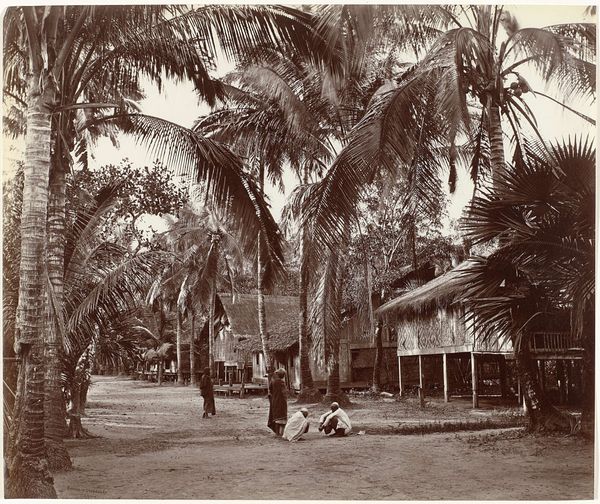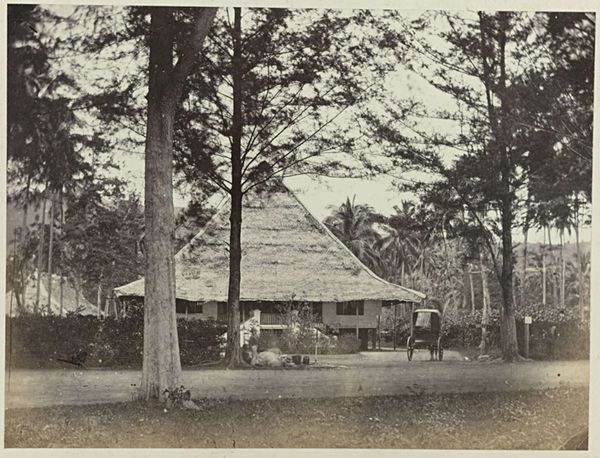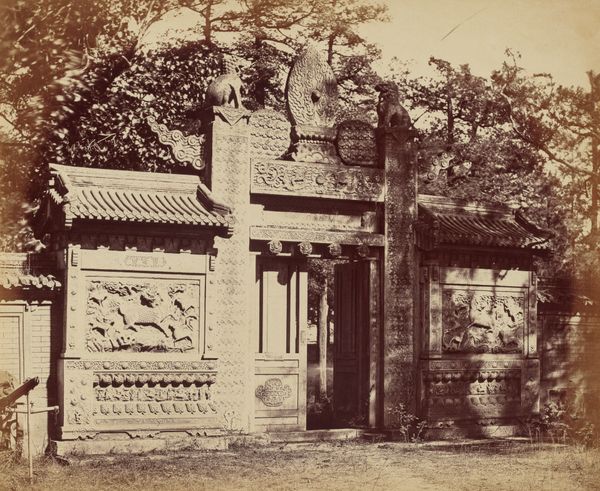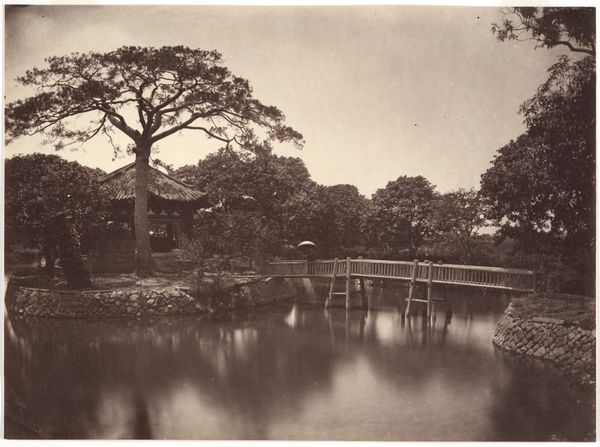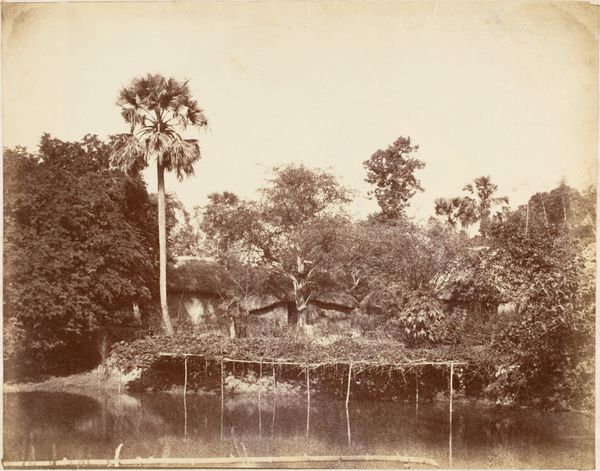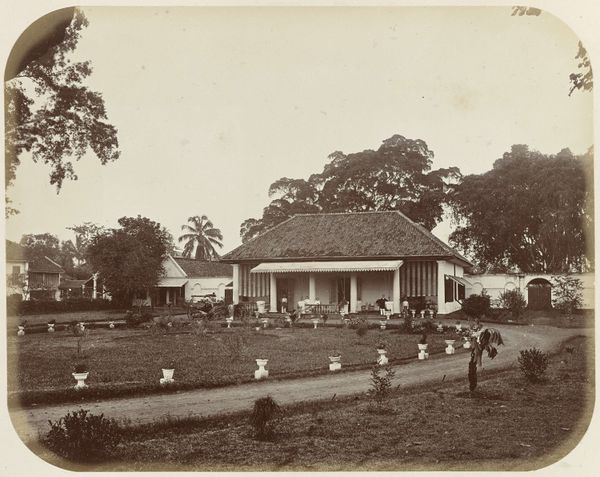
daguerreotype, photography
#
asian-art
#
landscape
#
daguerreotype
#
photography
#
orientalism
#
19th century
Dimensions: sheet (trimmed to image): 26.8 x 35 cm (10 9/16 x 13 3/4 in.)
Copyright: National Gallery of Art: CC0 1.0
Editor: Here we have Linnaeus Tripe’s 1855 daguerreotype, “Rangoon: Great Bell of the Shwe Dagon Pagoda." The scene is captivating. There is something stoic in the way the bell sits quietly, almost swallowed by the surrounding structures. What is your interpretation of the arrangement of elements in this composition? Curator: Immediately, one notices the tension created between the bell, as the implied subject, and its obfuscation within the frame. Tripe strategically uses the colossal trees and surrounding architecture to minimize the presence of the bell. The dense foliage, rendered with exceptional detail for the period, competes for visual dominance. Notice the delicate tonal gradations within the monochromatic palette; the texture functions semiotically, suggesting an experience more haptic than optical. Do you see how the linear structures – the pagoda roofs and supporting beams of the bell’s pavilion – create a contrasting geometry against the organic forms? Editor: Yes, the severe horizontals and verticals cut through the more organic shapes in a very striking way. It’s like the bell is deliberately placed *within* the landscape rather than being isolated as the primary subject. Curator: Precisely. It subverts traditional portraiture expectations. The photograph thus foregrounds the site's intrinsic qualities of mass, void, and shadow. It creates an intellectual experience more so than a devotional one, shifting the viewers experience of the work. How might we connect Tripe’s approach to nascent photographic theory? Editor: So the way the photograph frames the pagoda isn't necessarily just documentation; it’s also presenting an argument about structure and perception, something very self-aware. I’ll have to think more about that. Thank you. Curator: Indeed. And such rigorous formal examination allows for far more nuanced consideration of the artist’s intention than purely art-historical contextualization alone could provide.
Comments
No comments
Be the first to comment and join the conversation on the ultimate creative platform.
